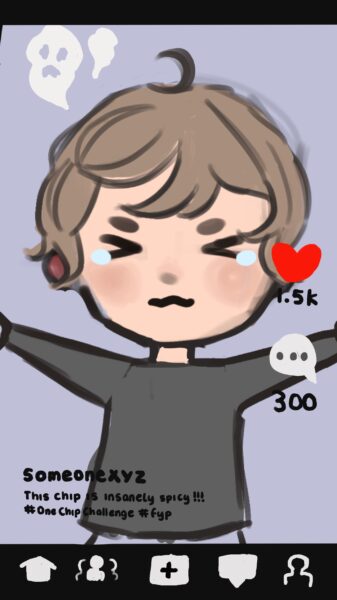

Since the beginning of the 2022-23 school year, San Mateo Union High School District Health Services has sent out several health warnings about various trends and dangers, including the Paqui One Chip Challenge and rainbow fentanyl.
On Sept. 27, SMUHSD Health Services issued a warning about the One Chip Challenge after students who participated in the challenge at school exhibited hazardous health effects.
The Paqui One Chip Challenge is a yearly sensation where individuals around the world attempt to consume the extremely spicy chip, then go as long as possible without drinking or eating anything. It is found in many convenience stores, making it easily accessible for students.
“It wasn’t too spicy,” said sophomore Macen Adams, who participated in the challenge. “I didn’t have to go to the hospital or anything, [but I] had a stomach ache for a good two hours.”
“We’ve heard a lot about misinformation over the last several years, and how social media can play into that”
The chip contains capsaicin, a natural compound in many chili peppers that results in mouth or throat irritation and pain. Capsaicin is also directly linked to heart attack and esophageal damage. Some students across the district who tried the chip were sent to the health office.
“Unfortunately, we [had] a couple kids try [the challenge,] and I worked with [them,]” said health aide Lesley Franco. “[For one student,] I gave him some ice to put around his lips and move around his mouth. We discussed with them that it wasn’t a good idea [and] they dealt with the consequences, so hopefully we [will not] see any issues again with this.”
Another health notice was sent out by SMUHSD Health Services on Sept. 29, warning against rainbow fentanyl, a potentially fatal drug that looks like colorful chalk. The craze has been spreading across the nation, with the Drug Enforcement Administration seizing this brand of fentanyl in 18 different states.
“We’re hearing [that cases involving fentanyl] are accidental in most instances in children [because] they don’t know what they’re putting in their bod[ies] and they don’t know the dangers of opioid overdose,” Devaney said. “We want to support those students [in] being [more] aware and asking questions.”
“We want to support those students [in] being [more] aware and asking questions”
While drug and substance abuse are undeniably concerns, some question whether rainbow fentanyl should truly be the primary focus in health warnings. Nabarun Dasgupta, a researcher testing illegal drugs at the University of North Carolina, mentions in a National Public Radio article that they see drugs of various colors every day, and it is nothing new. Instead, he claims the color is used merely for identification between groups.
Experts point to how fentanyl is not only present in rainbow fentanyl but also intentionally disguised as candy or medicine.
“If you’re taking medication, you [should] know exactly what it is and where it’s coming from, and [no one] should be taking medication [unless] prescribed for particular reasons from a doctor,” Devaney said. “There [were] a lot of online sales of fake medication that [are] laced with fentanyl or [are] fentanyl. They are meant to look exactly like each other [and it’s] very scary.”
According to the Center for Disease Control and Prevention, 107,622 Americans died of drug overdoses last year. Sixty-six percent of those deaths were related to synthetic opioids like fentanyl. While education is a key factor in preventing overdose from occurring, the District is also rolling out treatment options for drug overdoses. One such medication is Narcan, a nasal spray that is used in emergency overdose situations, and the acquisition of Narcan is a top priority for the district health department.
“We just had our professional development day [and Narcan] is something that we brought up as health aides,” Franco said. “We’re hoping that we learn more about it. Our main concern is the health of all the kids and we want to be prepared.”
“Our main concern is the health of all the kids and we want to be prepared”
These new types of substance abuse gained widespread attention and popularity in part through social media platforms like TikTok, where hashtags like ‘#onechipchallenge’ have been trending, enabling many to discover these previously unknown dangers. This easy accessibility of dangerous acts prompted TikTok to warn users with a message about the dangers of online challenges and to protect one’s health and well-being. However, there has been little evidence that TikTok actually took any action to remove these videos.
“We’ve heard a lot about misinformation over the last several years, and how social media can play into that,” Devaney said. “It would be great, especially [since] we’re seeing younger kids targeted, if there’s a proactive group [preventing it from happening].”
The National Institute on Drug Abuse cites avoiding dangerous substances as the best way to avoid health problems. To help support this, SMUHSD Health Services will continue keeping the schools updated on any new concerns.
